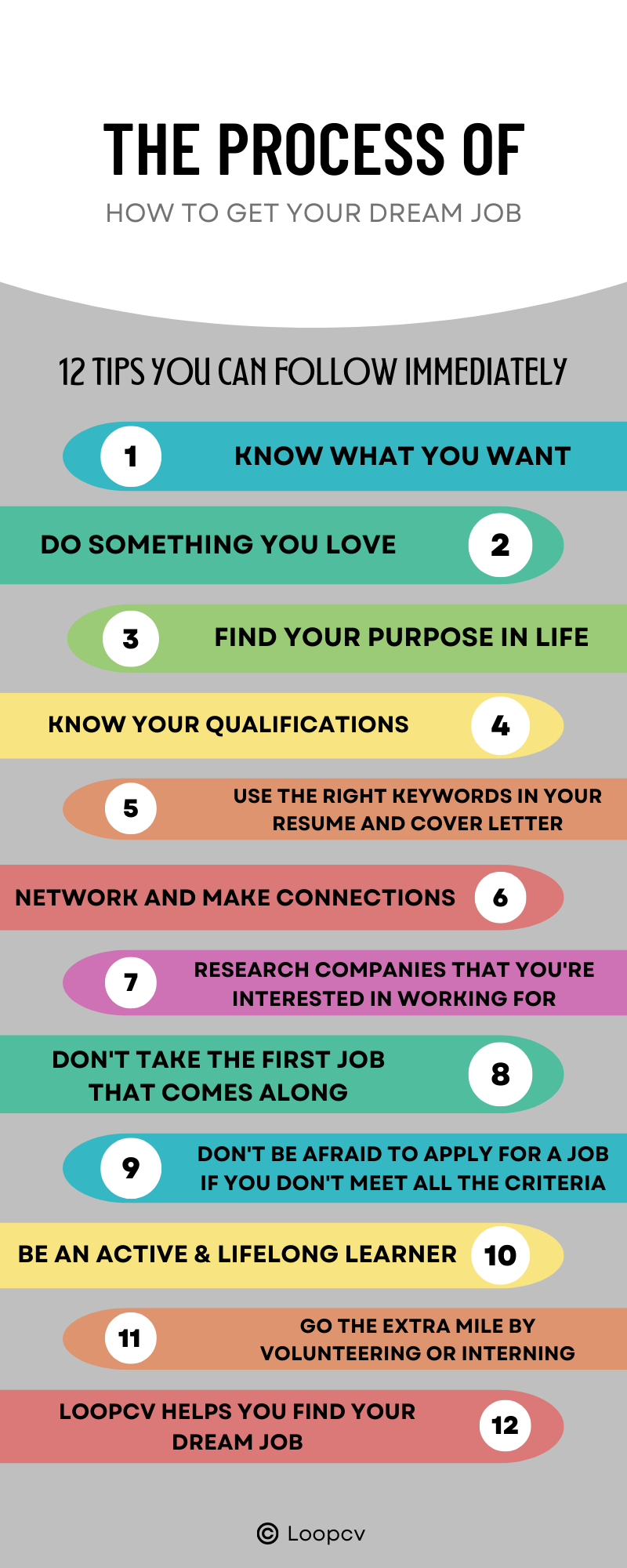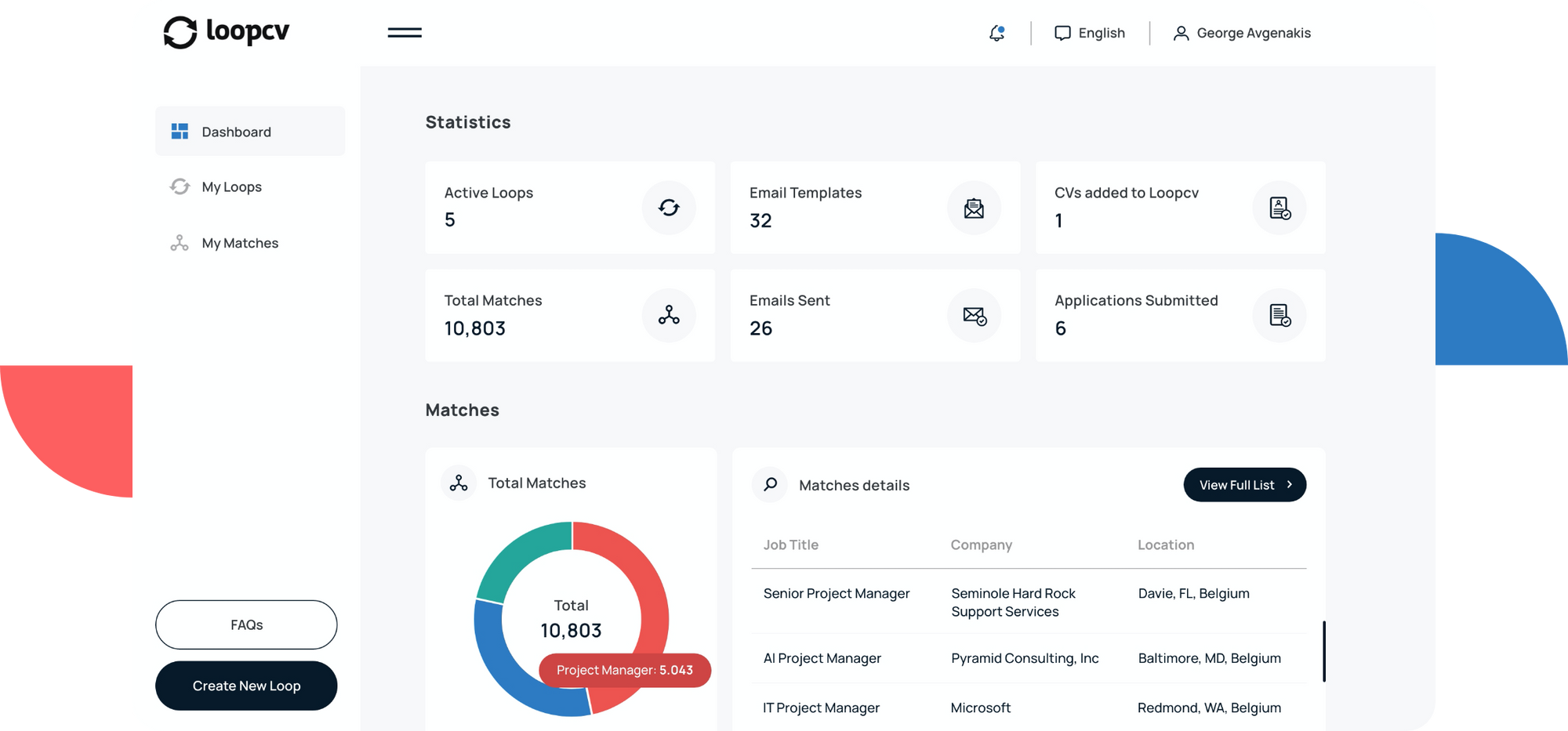How to get your dream job
So you want to get a job that's not only fun, but also pays well and has good benefits. You're not alone! In fact, many of us dream of working at companies like Google, Facebook and other corporate giants or want to create something of our own and be independent.
We may have different goals, but we all want to find a job that we love, and we are passionate about!
But how do you make this dream come true? It all starts with figuring out what you want to do for the rest of your life, and then finding the right company for you.
Here are 12 tips on how to get your dream job!

1. Know what you want
The first step to getting your dream job is figuring out what you really want. You need to know your strengths and weaknesses, as well as what you can offer a company, so that when you're looking for a job you can target your search or think about new career paths that may be right for you.
In order to do this, it's important to get clarity on the type of work and lifestyle that will make you happy.
Once you know what kind of work environment and lifestyle will help bring in the most happiness, then it's time to create goals based off these desires. Set one goal at a time until each one has been accomplished before moving onto another one. This way there won't be too many things going on at once!
2. Do something you love
If you don't enjoy what you're doing, it will be difficult for you to succeed. You should always choose a career path that makes you happy and fulfilled, instead of one that seems like the best financial decision at the time!
If your passion lies in writing and storytelling, then becoming a writer/author is a great option for getting started! Alternatively, if teaching others about science excites you more than anything else in the world, then going into education might be right up your alley.
The point here is that there are many different types of jobs where people can find joy, and therefore success, in their careers. The key is figuring out what those things are for yourself so that nothing stands between yourself and reaching those goals!
3. Find your purpose in life
The first step to finding your dream job is understanding why you want one in the first place. What is it about this new position that will make you happy? When we ask ourselves these questions, we're seeking our "purpose" as humans and as individuals. The word "purpose" is thrown around a lot, but what does it really mean to each of us?
The idea of finding your purpose may seem daunting or downright impossible. After all, who knows what their life's calling will be? That's where passion comes into play. It can help guide us towards discovering our true motives for working in a given field or industry. Start by figuring out what makes you tick and what gives your life meaning, then look at how those interests align with different careers paths.
Once you've identified some possible areas where your passions converge with one another (e.g., being able to work with animals while helping people), think about whether there are specific jobs available within those fields that fit what you're looking for most closely.
For example: Would I prefer working at an animal shelter or zoo versus managing pets through an online pet care company?
4. Know your qualifications
When you know what you want to do, it's time to take a step back and ask yourself: What are my qualifications for this job?
- What skills do I have?
- What skills do I need to learn?
- How will I get them?
5. Use the right keywords in your resume and cover letter
No matter what industry or field you're in, there are certain words that will help your resume stand out from the pile. Make sure to include those words when writing about your experience and skills not only will it help get you noticed by the right people.
It's also a good way of making sure that even if a company has an applicant tracking system (ATS), which scans resumes for key terms, yours will still be picked up by human eyes.
6. Network and make connections
It's no secret that networking is a crucial part of getting your dream job. The vast majority of jobs are found through people you know, so making connections with others in your field is the best way to get noticed by top employers.
But even if the position you want isn't at an organization you've worked for or have experience with, networking with people who have those connections can still be helpful.
How do you network? It's easy! You just have to make it happen by reaching out and introducing yourself to someone in your desired field. You could:
- Ask around at work about who might be hiring or who can help connect you with someone looking for interns.
- Attend events related to your interests (like conferences) and talk directly with attendees about their experience working in this industry/field.
7. Research companies that you're interested in working for
You can find people who work at those companies on LinkedIn, Glassdoor and Google in generall. You can also use Facebook and Twitter to find information about them.
It's very common nowdays to send emails or messages through LinkedIn (the two most professional ways of reaching out for work) in order to ask if there are job openings. Asking preferably the HR department employees of the company.
Many times, companies don't upload their job openings in platforms because they prefer to recruit from word of mouth or just by reaching out to other companies etc. So you don't have to loose anything (except some time of course) by asking this question.
Finally, something that I do very often is to reach out to the employees of the company I am interested to work for and specifically to the ones that are in the positions I would like to work. I ask them general questions for the company and their position, so that I can have the big picture!
8. Don't take the first job that comes along
- Don't take the first job that comes along. If a job comes up that seems too good to be true, it probably is. Take your time and consider other options before making a decision.
- Don't take any job just to make money. Take the time to find a position that speaks to your interests and career goals.
9. Don't be afraid to apply for a job if you don't meet all the criteria
Many jobs require a certain level of experience, education or skill. If you’re applying for a position that requires this, it’s best to be honest about your qualifications when preparing your cover letter and resume.
Some positions even require specific degrees or certifications that may not have been available at the time you graduated from college or university. If this is the case, consider including a letter from an employer in which they can verify your skills and experience while working with them.
10. Be an active & lifelong learner
Attending classes, seminars and workshops are a great way to learn new things. You can learn from other people's experiences as well as their mistakes. If you're looking for your dream job, you've got to be willing to take risks and try new things.
By attending classes and workshops, you'll get the opportunity to meet people in the same field that may know someone who could help you get your foot in the door of an organization where they work or have worked before.
11. Go the extra mile by volunteering or interning
Volunteering or interning is an excellent way to get experience in your field of interest. If you're not sure what you want to do yet, try volunteering or interning in different fields. Volunteering at places that interest you will help you determine whether or not a career in that area is right for you.
If possible, look into companies that are hiring and contact them about opportunities for volunteering or interning within their organization. You might even consider sending them a resume just to let them know how interested you are in working there. It never hurts to put yourself out there!
12. How can Loopcv help you find your dream job?

Well, Loopcv is a platform where with very simple steps (check below) you can find a job fast and effective. Everything is automated, so you don't have to worry about a lot of things, just to know what you like. And Loopcv will make your dream job a reality!
Another useful feature, is that it can provide you with tips, tricks and advices for your job research. Its automations will make your life easier and your results much more efficient!
Let's see the steps to sign up!
Create your profile and upload your CV. Provide Loopcv with your cv and the personal details required by job applications.
- Select your desired job titles, locations and many other optional settings. Give Loopcv the requirements of the jobs you're applying for, e.g., what industry or company you want to work in.
- Loopcv will search for jobs and either apply on your behalf or give you total control of your applications. Tell Loopcv where to search for jobs that meet these requirements, e.g., LinkedIn. Loopcv will then automatically apply to all jobs that match your criteria.

Conclusion
The reason why it's important to do what you love is because if you don't, you won't be good at it. If you do, on the other hand, then there's a good chance that not only will your career advance more quickly than someone who does not enjoy their work, but also that this job will be the one thing in your life that brings true joy and satisfaction.
When I first started working as a freelancer a year ago, my goal was simply to make money & create my portfolio by any means necessary: Writing articles or completing small tasks for clients online. I didn't do much research into what I wanted my career path to look like or how long I'd stick with freelancing before making another move into another industry altogether (or even just jumping ship completely)...
This lack of planning led me down a very rocky road where sometimes was difficult just getting through each day without feeling overwhelmed by all the things required from me at once!
So, I hope these tips will help you on your journey to your dream job. If you want to be successful in life, it's important to follow your passion and do what makes you happy. This way, when opportunity knocks at your door, you'll be ready!



